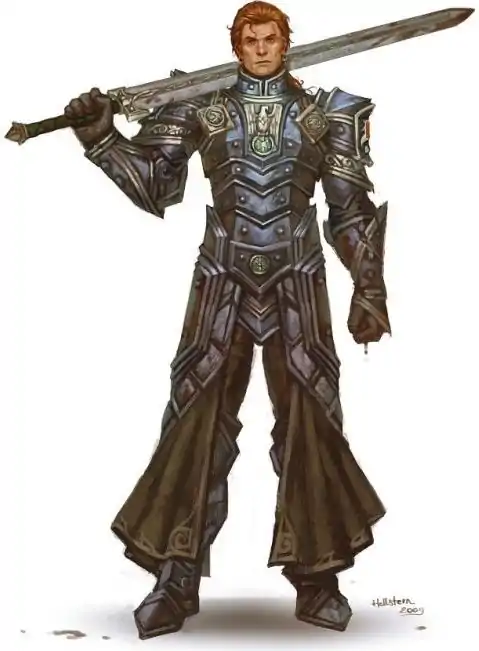Paragon (5e Subclass)
Paragon
Fighter Subclass
 |
|---|
| A paragon realizes they must know themselves as well as their enemy. |
A fighter who epitomizes training and seeks perfection over their martial prowess. These warriors focus on the art of combat and train their reflexes to deadly speeds. In combat, the paragon becomes an engine of destruction and resilience, able to find the perfect position and the precise moment to strike.
- Combat Stances
At the 3rd level, you learn two stances, as detailed at the end of the subclass's description. You can enter or switch stances as a bonus action on your turn. A stance lasts for one minute, or until you are incapacitated. You learn an additional stance every 2 levels. (start off with 2 stances at level 3 and at the 5th level learn a stance etc)
- Martial Intuition
At level 7, if you spend at least 1 minute observing or interacting with another creature you can learn certain information about its capabilities compared to your own. The DM tells you if the creature is your equal, superior, or inferior in regard to two of the following characteristics of your choice:
- Strength score
- Dexterity score
- Constitution score
- Armor Class
- Current hit points
- Total class levels (if any)
- Fighter class levels (if any)
You may also learn any information regarding their personality (aggressive, passive, or defensive) and if the creature is friendly, fearful, or hostile.
- Blended Stances
At level 10, you can enter two stances simultaneously. When switching stances, you can switch one or both.
- Superior Reflexes
At level 15, you gain proficiency in Dexterity Saves.
- Perfect Form
At level 18, you can take two reactions per round, however, you can only use one reaction per turn.
Stances
- Agile Harrier. While in this stance, creatures have disadvantage on opportunity attacks made against you.
- Artful Dodger. While in this stance, when you take the dodge action, you can use your reaction to force a creature to reroll one attack roll made against you and take the lower result.
- Deceptive Posture. While in this stance, creatures have advantage on melee attack rolls made against you. When a creature makes a melee attack roll against you, you may use your reaction to make a melee attack against it. If you hit, their attack is instead made with disadvantage.
- Duelist's Parry. While in this stance, and while you wield a melee weapon in each hand, you may make an opportunity attack as a reaction against a creature who misses you with a melee attack.
- Focused Momentum. While in this stance, if you miss with a melee attack on your turn, you gain advantage on your next attack roll against the same target before the end of your turn.
- Patient Study. While in this stance, you may use your bonus action on your turn to roll a d4. Before the end of your turn, you may add the result to one attack roll that you make. If it hits, you also add the result to the damage. If you do not add it to an attack, or you make no attack, by the end of your turn, the bonus is lost.
- Practiced Assault. While in this stance, whenever you hit with an attack, you can choose to deal 5 + your ability modifier damage to the target instead of rolling the damage normally.
- Pressured Fire. While in this stance, when you take damage from an attack made by another creature, the next ranged weapon attack roll that your make before the end of your next turn is made with advantage.
- Quiet Step. While in this stance, if you can hear, you suffer no disadvantage on melee weapon attack rolls due to being unable to see the target (because of blindness, invisibility, etc.). However, your speed is halved.
- Retaliative Blow. While in this stance, when you take damage from a melee attack made by another creature, the next melee weapon attack roll that your make before the end of your next turn is made with advantage. If you hit, add 1d4 to the damage.
- Stable Footwork. While in this stance, you can use your reaction to negate any effect that pushes, pulls, or knocks you prone. Damage is still dealt as normal.
- Vigilant Defense. While in this stance, When taking damage, you can use your reaction to reduce that damage by 1 + your Constitution modifier.
- Weighted Persistence. While in this stance, and while wielding a two-handed or versatile melee weapon in two hands, you gain a +2 bonus to attack and damage rolls on an attack made with it if the previous attack made with that weapon hit its target earlier that turn. This bonus is not cumulative.
- Wild Strike. While in this stance, you have disadvantage on weapon attacks, but when you hit, you may add an additional weapon die to the damage, and treat any 1 rolled as a 2.
Back to Main Page → 5e Homebrew → Character Options → Subclasses